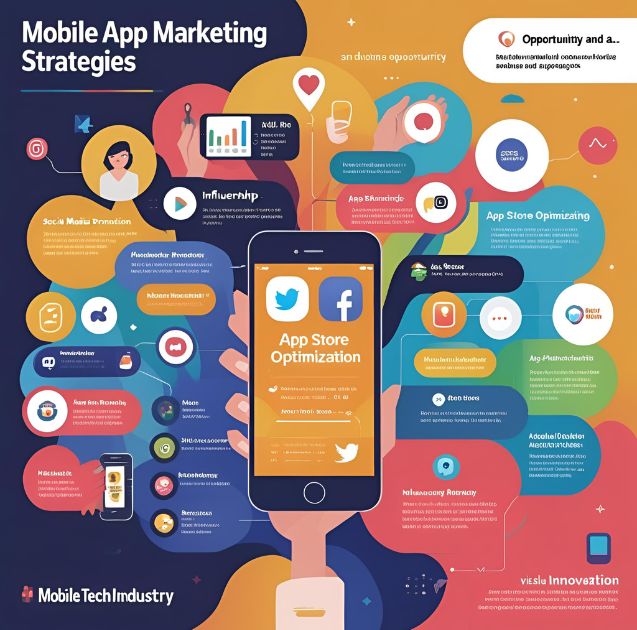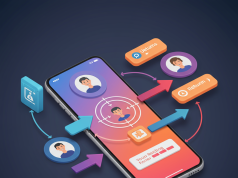With more than 3.5 million apps available across the Google Play Store and iOS App Store, standing out in the app marketplace has become increasingly challenging. If you’re an app creator or marketer, understanding how to effectively market your app, optimize for app stores (ASO), leverage advertising, and design sustainable monetization strategies are essential steps to success.
This blog explores how you can leverage these critical components to get your app not just noticed but profitable.
What You’ll Learn:
- Mobile marketing strategies to expand your audience.
- How App Store Optimization (ASO) boosts app discoverability.
- Key advertising methods to market your app.
- Sustainable app monetization strategies.
No matter if you are an experienced or a newbie app creator, these practical tips will set your application on the path to long-term prosperity and profitability.
1. Mobile App Marketing Strategies

Marketing your app is not as simple as making a few social media posts or sending out an email to your crowd. If you want to gain a loyal base of users and drive downloads, you need a multifaceted marketing campaign. Here’s how to get social media marketing right for your app.
Create a Pre-Launch Plan
The sooner you start marketing your app, the higher your chances are. This is what your pre-launch campaign should involve:
Create a Teaser Campaign:
- Post sneak peeks of your app’s features through interactive videos, GIFs, or graphics.
- Generate buzz on social media platforms such as Instagram, TikTok, or LinkedIn, depending on your target audience.
Deploy a Landing Page:
- Create a simple yet elegant landing page with a clear call-to-action (e.g., “Notify Me” or “Pre-register”).
- Utilize the page to collect emails for early access and build a user base even before the app is live.
Take Advantage of Social Media Marketing (SMM)
Social media is a goldmine of active users. Develop an online community by sharing user-focused content, quizzes, polls, and even memes. Integrate organic efforts with paid social advertisements to develop follower numbers and generate app interest.
Work with Influencers
Reach out to influencers or micro-influencers in your niche market. They can provide your app with organic exposure to an engaged audience and both credibility and downloads.
Example: A fitness app can collaborate with health and exercise influencers to show their app as part of an exercise routine.
Incentivize User-Generated Content (UGC)
Inspire early adopters to comment on your app via hashtag promotions or social shares of their experiences. People trust people more than they trust advertisements, so UGC is likely the most effective marketing tactic.
Target Reviews
Users’ reviews and testimonials are vital to app installs. Actively encourage satisfied users to write good reviews to create app store page credibility and social proof.
2. App Store Optimization (ASO): What It Is and How To Master It
The Basics of ASO
App Store Optimization (ASO) is the act of maximizing your app’s visibility on the App Store or Google Play Store. It’s basically app SEO. Good ASO is where your app is displayed when a user searches for your keywords.
Key Elements of ASO
App Title and Subtitle
Utilize relevant keywords that summarize what your app does, but keep them short so that they are memorable and catchy.
Description
Highlight important features and benefits in your app description. Use this section as user-centric and include secondary keywords naturally.
Keywords
Research high-performing, top-ranked keywords pertaining to your app’s niche via tools like Sensor Tower or App Annie. Modify these keywords periodically based on performance data.
Screenshots and Video Previews
First impressions matter. Invest in gorgeous, visually stunning screenshots and short video demos to flaunt your app’s user interface, worth, and key differentiators.
Reviews and Ratings
Positive reviews help get your app noticed and signal app quality to prospective users. Encourage satisfied users to leave a rating for your app and reply to all reviews promptly.
Bonus Tip
Localize your ASO. Based on studies, apps that localize several languages and keywords see more downloads in international markets.
3. Marketing Your Mobile App
Advertising extends your marketing reach and targets people beyond your organic impression. Here are some of the most significant app advertising channels that you can leverage:
Social Media Ads

Facebook Ads
With its robust targeting capabilities, Facebook and Instagram allow you to target very specific audiences.
Try campaign types like App Installs or Engagement Ads to optimize for in-app purchases (IAP).
TikTok Ads
Short and fun content can reach a younger audience through TikTok’s “For You” algorithm. Emphasize the fun or useful elements of your app in a creative way.
Search Ads
Search ads appear directly in app store search results. For example:
- Apple Search Ads allows you to reach users who are actively searching for related keywords.
- With Google App Campaigns, you can advertise your app on Google Search, YouTube, and other places.
Retargeting Ads
Not every user downloads or interacts with your app after the first touch. Retargeting ads are reminders to potential users who have already interacted with your app content or visited your site.
4. Monetization Strategies for Mobile Apps
Monetizing an app must be planned to maintain profitability and user satisfaction. The most popular forms of monetization nowadays are:
Freemium Model
An app that is free to download with premium functionality accessible through in-app purchases. This is one of the most popular forms of monetization used for entertainment and productivity apps such as Spotify and Evernote.
Subscription-Based Model
With this model, users pay a recurring monthly or yearly fee for access. Subscription apps surged throughout the pandemic and continue to reign supreme. Fitness apps, streaming apps, and even meal planning solutions suit this model well.
Ad-Supported Apps
Monetization with ads is also a typical technique, particularly among free applications. Native advertising or rewarded advertising (where the consumer can watch an ad to reveal features or coins, for instance, popular within gaming applications) are some good options.
One-Time Purchase
Flat-rate programs are a mere exception now, but still a viable niche space, such as books, tools for productivity, or one-off utilities.
Partnership and Sponsorship
Sign brand sponsorships or sponsor deals with related companies that share a similar mission or audience for your app.
Tips for Synthesizing These Strategies for Success
In order to boost your app’s income, try to synthesize more than one strategy. For instance:
- Offer freemium access but bill for additional features in the form of subscriptions.
- Feature rewarded ads for unsubscribing, but still offer a no-ad experience to premium-tier subscribers.
Final Thoughts
A winning mobile app goes beyond exceptional design. You’ll need a marketing strategy that grows downloads, ASO techniques to maintain visibility, creative ads for scalability, and monetization strategies to make your app a thriving business.
Looking for more ways to power your app marketing and monetization efforts? Stay ahead of the game with these actionable strategies and expand your user base with confidence.




